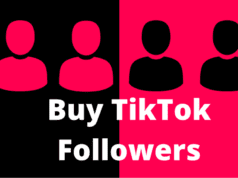
Growing your business in Europe means presenting new potential customers with information about your product, service or organisation in their native language while improving your ranking on local language Google pages. A well-executed multilingual SEO strategy for Europe will do both. In this article, we discuss 4 simple steps to achieve this:
1. Analyse existing content
Before starting work on new content targeting one or multiple European countries, your first step should always be to analyse where you’re starting:
– Analyse your website’s general performance:
- Website performance is a huge factor in your SEO ranking. Whether you already have a website in various European languages or are planning to translate it, you need to have a sense of any problems that need to be resolved. Slow page loading speed, 404 Page Not Found Errors, duplicate content and other elements all influence your ranking negatively.
- The amount of time spent on your website and number of pages visited is also a factor in your SEO ranking. Create a clear, intuitive website with easy-to-identify sections and a menu tool.
– Conduct keyword research in your target languages. Keep in mind that you need to target specific countries rather than simply languages:
- What is a natural keyword in one local variant of a language may not be a priority keyword for another country. Consider the differences between US and UK English: one would use ‘elevator’ as a keyword, the other ‘lift’. Similar differences exist in variants of Spanish, French and Dutch. A good multilingual SEO strategy should take account of this.
- Google.nl prioritises websites in the Netherlands ending on .nl, while Google.be prioritises Flemish websites ending in .be. So even if your keywords are the same for both Dutch from the Netherlands and Dutch from Belgium, you may need separate websites.
2. Create content in European languages
There are two main ways in which to create your SEO content: translate content you already have into your target languages, or commission new articles, images, infographics, etc. Assess carefully what should be translated and what you need to create new in your target language:
- Your homepage, checkout page and product pages can be translated directly.
- Popular blog posts and infographics can be translated, but for most blogs and other entertaining content, it may be preferable to simply commission new content tailored to your target audience in Europe. The reason for this is simple: each country will have a different set of priority keywords as well as article themes that are more likely to gain traction.
3. Link building
Link building consists of placing content containing links to your website on directories, high-profile blogs and other third-party websites. This stage requires link builders who are fluent (ideally native) speakers of your target language to identify the most relevant blogs and directories for your product or services. The SEO impact of link building is twofold:
- Google’s ranking algorithm considers links on authority websites as a vote of confidence in your website, and will therefore increase its ranking.
- Links on other websites serve to direct potentially interested customers to your website, thereby increasing your sales while driving up traffic, which in turn feeds into Google’s algorithm to improve your search engine ranking.
4. Track your progress
Having created localized keyword research, a well-functioning website in your target European languages and articles on blogs and directories, you now have the basic ingredients of a multilingual SEO strategy. However, tracking your progress is key. Keyword rankings and competitiveness shift constantly due to the entry of new competitors, changes to Google’s algorithm and other factors. Assess the effectivity of your SEO strategy on a regular basis and make adjustments accordingly.
Multilingual SEO seems quite complicated, but once you understand the basic principles of the Google Rankbrain algorithm and how to optimize your website and other content to fit this, you should be able to get started. Or, if you want to make sure to keep up with any Google updates and changing trends, simply get in touch with a team of SEO experts with many years’ experience in European markets for personalized advice on multilingual SEO.








